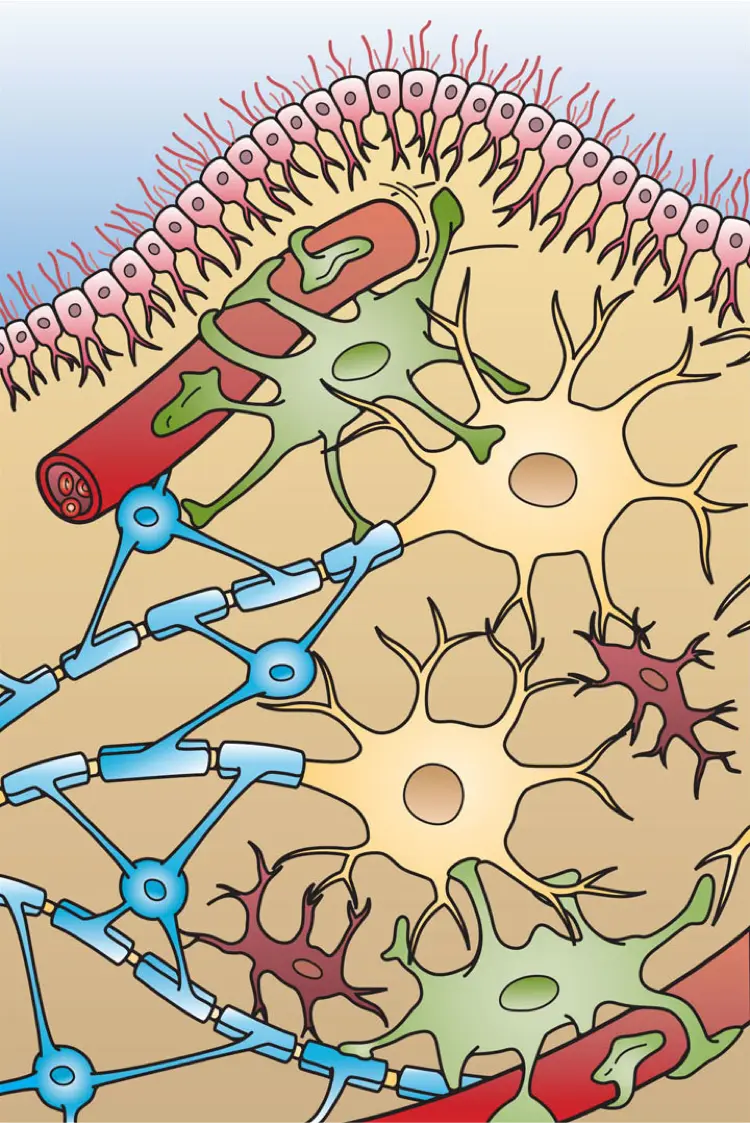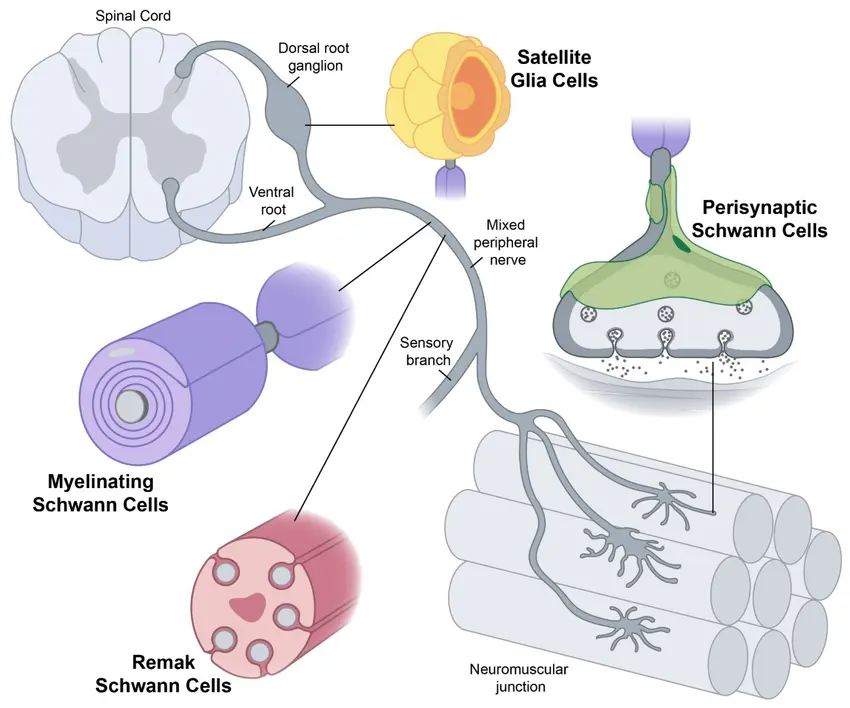When most people think of the brain, neurons usually take center stage. These electrical messengers are known for transmitting signals and controlling everything from heartbeat to thought. However, an equally vital class of cells often goes unnoticed: glial cells. Once considered mere "neural glue," glial cells are now recognized as indispensable components of the nervous system, involved in everything from synapse formation and immune defense to neurotransmitter regulation and brain development.
What Are Glial Cells?
Glial cells, or neuroglia, are non-neuronal cells in the central and peripheral nervous systems that support, protect, and maintain the optimal environment for neurons. The name glia derives from the Greek word for “glue,” reflecting the early belief that these cells simply held the nervous system together.
However, modern neuroscience has shown that glial cells are far more than structural scaffolds they actively regulate neural function, plasticity, and homeostasis. In fact, glial cells outnumber neurons in certain brain regions and make up over 50% of the brain's total cell population.
Types of Glial Cells
Glial cells are broadly divided into two categories based on their location:
1. Central Nervous System (CNS) Glia
-
Astrocytes
Star-shaped and abundant, astrocytes provide structural and metabolic support to neurons, regulate extracellular ion balance, maintain the blood brain barrier, and play key roles in synaptic modulation and plasticity.
-
Oligodendrocytes
These cells produce the myelin sheath in the CNS, which insulates axons and speeds up electrical transmission. A single oligodendrocyte can myelinate multiple axons. -
Microglia
The immune cells of the brain, microglia constantly monitor the CNS for signs of infection orf injury. They remove dead neurons and pathogens through phagocytosis and play roles in neuroinflammation and neurodegeneration. -
Ependymal Cells
These line the ventricles of the brain and the central canal of the spinal cord, producing and circulating cerebrospinal fluid (CSF).
2. Peripheral Nervous System (PNS) Glia
-
Schwann Cells
The PNS equivalent of oligodendrocytes, Schwann cells myelinate axons and support nerve regeneration after injury. -
Satellite Glial Cells
Found in sensory, sympathetic, and parasympathetic ganglia, these cells regulate the microenvironment around neuronal cell bodies and contribute to pain signaling.
Functions of Glial Cells
Although traditionally overshadowed by neurons, glial cells perform a wide array of critical tasks:
1. Myelination
Oligodendrocytes and Schwann cells insulate axons with myelin, which enhances the speed and efficiency of nerve impulse transmission.
2. Neurotransmitter Regulation
Astrocytes regulate the levels of neurotransmitters like glutamate and GABA in the synaptic cleft, maintaining synaptic homeostasis and preventing excitotoxicity.
3. Ion Homeostasis
Glial cells control extracellular potassium and calcium concentrations, influencing neuronal excitability and network activity.
4. Metabolic Support
Astrocytes provide energy substrates (like lactate) to neurons and help remove metabolic waste, ensuring optimal neuronal performance.
5. Immune Surveillance
Microglia continuously monitor the brain for damage or pathogens, initiating immune responses and clearing debris when necessary.
6. Synaptic Pruning and Plasticity
Glial cells are active participants in neural circuit remodeling, particularly during development and learning.
Glial Cells in Biotechnology and Regenerative Medicine
Modern research is now leveraging glial cells for innovative therapeutic strategies:
- Stem Cell Therapy: Glial progenitor cells can differentiate into astrocytes and oligodendrocytes, offering promise for treating demyelinating diseases and spinal cord injuries.
- Gene Editing and CRISPR: Targeting glial cells with gene-editing tools could correct mutations or modulate inflammatory responses in neurodegenerative conditions.
-
Glia-Derived Exosomes: These vesicles carry proteins and RNAs that can be used as biomarkers or therapeutic agents.
Glial Cells and the Future of Neuroscience
The traditional neuron-centric model of brain function is rapidly evolving. Neuroscientists now recognize that understanding cognition, memory, and disease requires an integrated view that includes glial cells. Technologies like two-photon microscopy, optogenetics, and single-cell transcriptomics are revealing glial dynamics in real time and offering new insights into how these cells influence behavior and learning.
Moreover, neuroglial engineering the manipulation of glial function through biomaterials, bioelectronics, and synthetic biology is emerging as a cutting-edge field in brain computer interfaces and neuroprosthetics.
Conclusion
Glial cells are no longer mere "supporting actors" in the brain's story—they are essential regulators of nervous system function and key players in both health and disease. From insulating axons to orchestrating immune responses and guiding synapse formation, glia are foundational to brain development, plasticity, and resilience.
As research progresses, targeting glial cells may unlock new strategies for treating everything from neurodegenerative diseases and chronic pain to traumatic brain injury and cognitive decline. In the age of neurobiotechnology, glial cells may hold the keys to unlocking the full potential of the human brain.

